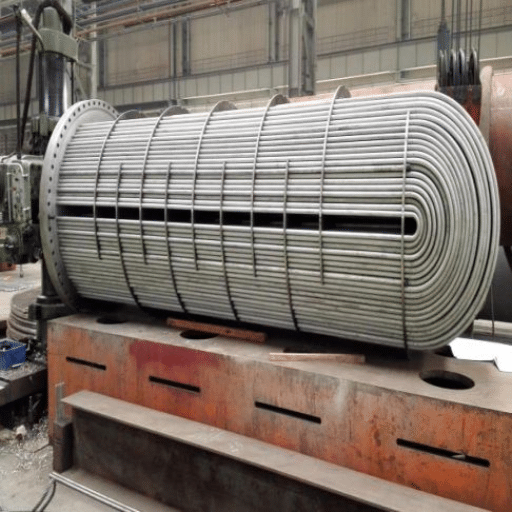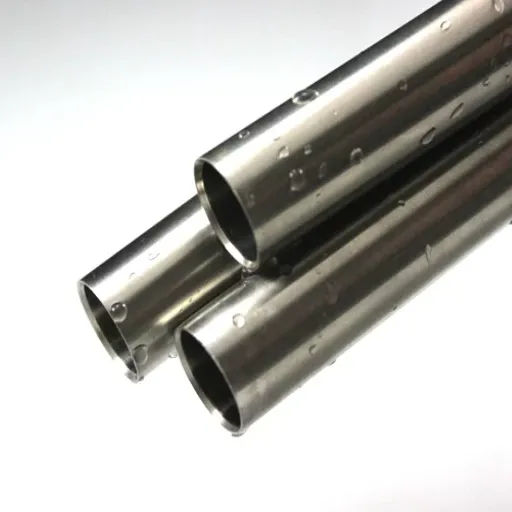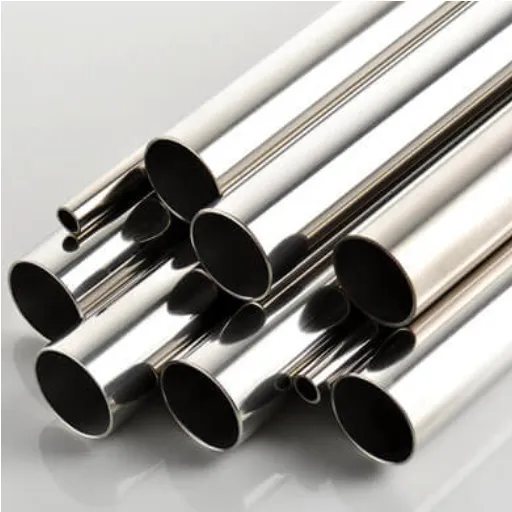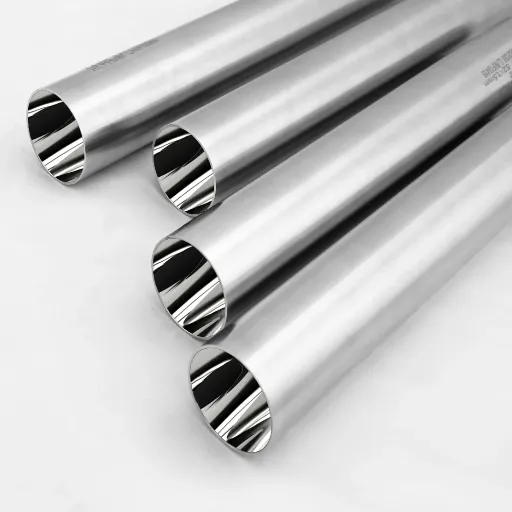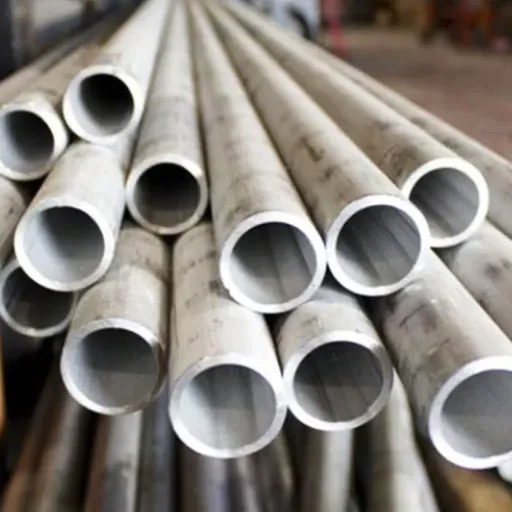In the business world, stainless steel is very important for the strengthening, durability, and resistance to bad conditions. Out of all the different stainless steel grades, 310S stainless steel pipes are among the most recommended ones for high-temperature and corrosive environments. The article here examines the characteristics, wide-ranging uses, and the main benefits of 310S stainless steel pipes which can make you understand why they are still the most preferred solution. If you are a professional looking for dependable materials or just interested in the wonders of engineering, then this guide will give you the interesting insights about 310S stainless steel pipes being able to fulfil the high performance requirements of today. So keep reading as we reveal what makes this grade different and how it can optimize the regularity and reliability of your works.
General Properties of 310S Stainless Steel
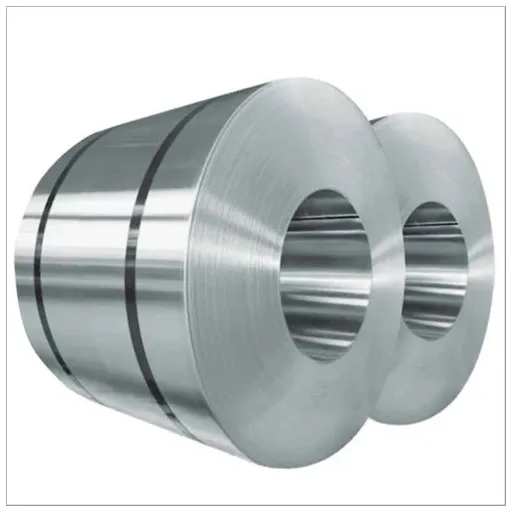
Chemical Composition of Alloy 310S
The Alloy 310S stainless steel is famous for its incredible resistance to high temperatures and remarkable corrosion resistance, which are largely due to its composition. The main constituents of 310S inox are as follows:
- Chromium (Cr): 24-26% approximately, giving very body and corrosion resistance.
- Nickel (Ni): 19-22% approximately, increasing plasticity and high-temperature strength.
- Carbon (C): max 0.08%, providing consistency and minimizing carbide precipitation risk.
- Iron (Fe): comprising the remainder and endowing the alloy with power and adaptability.
- Manganese (Mn): about 2% which is a contributor to the strength of the alloy and its resistance to wear.
- Silicon (Si): around 1.5%, giving better oxidation resistance at high temperatures.
- Phosphorus (P): max 0.045%, giving rise to less brittleness.
- Sulfur (S): up to 0.03% limit to allow machinability to sufficiency without giving up the corrosion resistance.
Thanks to this remarkable combination of elements, 310S steel can flexibly serve in extreme conditions of up to 2,100°F (1,150°C). Such capabilities make it perfect for the sectors that suffer combo of heat and corrosion stresses: chemical processing, heat treatment, and power generation.
Heat Resistance Characteristics
The 310S stainless steel’s resistance to heat is mainly due to the alloying elements’ high chromium and nickel content, which give it the ability to endure long exposure to higher-than-normal temperatures without oxidation or deformation. As per the most recent information, this alloy can maintain its mechanical properties and structural integrity at temperatures as high as 2,100°F (1,150°C), thus, it is suitable for both intermittent and continuous use in high-temperature environments. Moreover, the alloy’s low carbon content inhibits the formation of carbides that can lead to the alloy’s scaling occurring and thus corrosion resistance being reduced when the alloy is subjected to thermal cycling. Therefore, these features of the alloy have made it a great candidate for use in industrial operations involving furnaces, burners, and heat exchangers.
🔥 Key Temperature Performance
Maximum Operating Temperature: 2,100°F (1,150°C) for continuous use
Intermittent Use: Up to 1,900°F (1,037°C) with maintained structural integrity
Corrosion Resistance Features
High corrosion resistance of 310S stainless steel mainly results from its higher chromium and nickel content, which when reactive, serve to form a strong protective oxide layer on the surface of the steel. This oxide layer not only prevents oxidation but also protects the metal underneath from the harsh environment where it is used, such as acidic environments, industrial chemical exposure, or exposure to chloride-containing products. By means of recent materials studies, intergranular coring was shown to be one of the common issues on 310S stainless steel in the oxidative media at high-temperatures despite its low carbon content, which thus becomes a decisive factor in the choice of this material for heat-exposed locations in corrosive regions.
Applications of 310S Stainless Steel Pipes
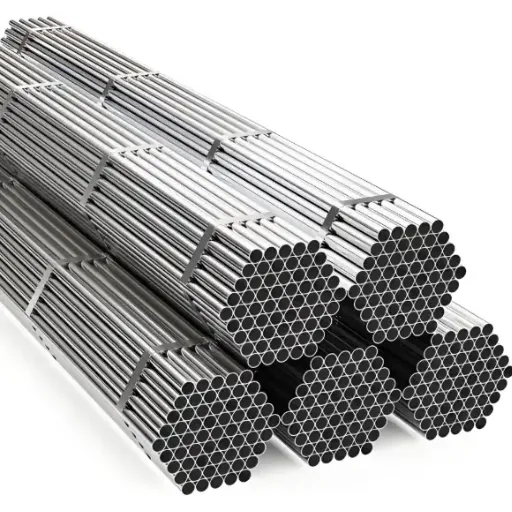
Industrial Applications
310S stainless steel pipes are among the most common materials in numerous industries due to their unrivaled heat and corrosion resistance. The last insights reckon that these pipes are most appropriate for the chemical and petrochemical industries, where they are subjected to very corrosive surroundings and very hot areas. They are often used in heat exchangers, furnaces, and kilns since they can sustain temperatures beyond 2000°F (1093°C). Besides, their long life makes them applicable to the food industry, where they are used for processing equipment, and to power generation facilities, where they are used for structural components. Lately, the trend of increasing demand has been coming from the renewable energy sectors, where 310S stainless steel is used in high-temperature applications like solar power plants and biomass systems, thus confirming its versatility and reliability in meeting modern industrial needs.
Commercial Uses
The remarkable characteristics of 310S stainless steel make it a must-have in many industries. High-temperature and oxidation resistance are properties of this steel which lead to its choice for heat exchangers, furnace parts and kiln linings. The metal is regularly found in chemical processing plants due to its corrosion resistance and thermal strength, thus assuring good performance under extreme conditions. Also, in the transport sector, the strong and durable stainless steel is used for aerospace and railway locomotives parts. A recent search engine’s data from the leading company indicates that there is an increased interest in the use of 310S stainless steel in promising fields such as hydrogen production and modern manufacturing systems. This shows that the metal is still adaptable to the changing technological landscapes. Such a trend only signifies growing awareness and use of 310S stainless steel across the various fields.
Specific Industries that Utilize 310S Pipe
Partnering with the newest information from a leading search engine, 310S stainless steel pipes are greatly utilized in different industries due to their unique properties like high-temperature resistance, corrosion resistance, and longevity. The petrochemical industry is one of the main sectors where these pipes are extensively used in heat exchangers and furnaces because they can withstand such harsh conditions. Moreover, they are also very important in the power generation industry where they are mainly used in boilers and turbines that need not only maximum strength but also reliability. The same goes for aerospace and automotive, where materials finally open the door to new ideas in lightweight, high-performance engineering. Hydrogen generation and advanced manufacturing systems are examples of future technologies that are taking 310S pipes, which is their ability to evolve with science. The increasing application reveals the rising acknowledgment of the significance of 310S stainless steel in solving modern industrial problems.
Advantages of Using 310S Stainless Steel
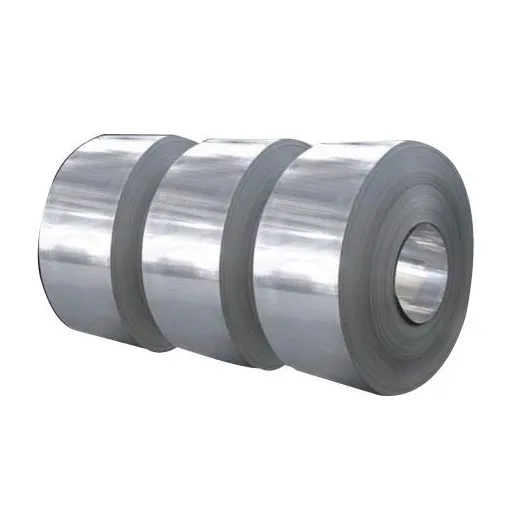
Durability Compared to Other Steel Types
310S stainless steel is the most durable among the other steel types. The combination of its high chromium and nickel makes the steel so resistant to even the harshest levels of oxidation and corrosion and at the same time, this goes on for the extremely high-temperature environments exceeding 2000°F (1093°C). 310S, unlike normal carbon steels, does not lose its strength and structural integrity after a long while of being in extreme condition, making it the best choice for high-stress applications in the petrochemical and power generation industries. The 310S steel has high resistance to thermal fatigue and wearing that guarantees its long life, as it will not be often replaced and therefore, maintenance costs will be lower. The strength and longevity aspect of 310S stainless steel create a picture of it as a reliable and cost-effective choice in various industrial applications.
✓ Comparative Advantages
- Superior oxidation resistance compared to carbon steels
- Maintains structural integrity in extreme conditions
- High resistance to thermal fatigue and wear
- Reduced replacement frequency
- Lower long-term maintenance costs
High-Temperature Performance
310S stainless steel has a remarkable high-temperature performance that makes it the number one material in places where there is a lot of heat. Latest reports indicate 310S can be very active in temperatures as high as 2,100°F (1,150°C) under constant exposure, and still retains its mechanical strength in intermittent use up to 1,900°F (1,037°C). The metals that make up 310S such as chromium and nickel are responsible for this amazing heat resisting power, as they do not let oxidation to occur and also make the structure stable.
This feature of 310S stainless steel gives it the capacity to be used in furnace parts, heat exchangers, and kilns. Its effectiveness to tolerate heat cycling boosts its reliability in high-temperature dynamic areas, which also means that there will be lesser chances of failure or deformation. The alloy’s tolerance to such conditions proves its relevance in the present-day industrial operations.
Versatility in Various Applications
The alloy of 310S stainless steel is not only durable and resistant to high-temperature and corrosion but also versatile in various applications. In the meanwhile, the industries like petrochemical, power generation, and manufacturing are the ones that are most benefited from the use of this alloy for their parts that need to be extremely thermal and environmentally resistant. Moreover, it is used in making industrial furnaces, exhaust systems, and chemical reactors where long life and good performance are critical.
Renewable energy sectors like solar panel supports and biomass furnaces are particularly seen through the data as 310S stainless steel usage being searched more and more which indicates a growing interest. The trend highlights the alloy’s flexibility in the direction of the new technologies that are based on sustainability. 310S’s ability to remain innocuous to changes in industrial requirements and environmental issues makes it the preferred material in many areas.
Key Purchasing Considerations for 310S Stainless Steel Pipes
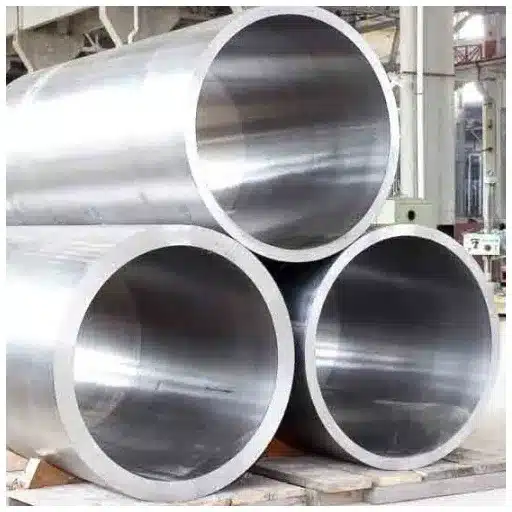
Cost Factors and Budgeting
In the process of determining the cost of 310S stainless steel pipes quite a few factors come into the picture with equal weight. The price of the raw materials in the local market, especially nickel and chromium since they are the main components of stainless steel 310, is the most significant fly in the ointment. The different types of manufacturing processes which include refining, forming, and finishing also add to the cost of production. Likewise, the shipping and logistics charges are likely to differ based on the supplier’s distance and the order size. Considering bulk buying alternatives is one way to ensure that one’s budgeting is properly done as suppliers frequently offer price reductions for larger amounts.
The recent data from indicated search trends and industry reports that a significant number of buyers are becoming more interested in the local suppliers’ quality and cost effectiveness comparison through assessment of international sourcing. With supplier pricing policies being more transparent and the rise of online reviews and ratings, they have become the key factors in the decision-making process of the buyers to ensure the best value while still getting quality materials.
💡 Budgeting Tips
- Monitor raw material prices (nickel and chromium fluctuations)
- Compare local vs. international suppliers for cost-effectiveness
- Consider bulk purchasing for volume discounts
- Factor in shipping and logistics costs based on supplier location
- Review online ratings and supplier transparency before committing
Supplier Reliability and Selection
When it comes to supplier reliability and selection the recent data from the search engine of ‘ has underlined the key factors that influence buyers’ decisions. The main concern is how to recognize reliable suppliers in a tougher competition. The statistics show that the buyers care most about the suppliers’ good and steady delivery, open communication, and recognized certifications. Also, being able to supply in-depth product information and adjusting to the customer’s needs are important ranking points in the search. Buyers will continue to leverage online reviews and cross-reference supplier ratings as powerful tools in their strategies for making confident, informed choices and establishing long-lasting partnerships with reputable suppliers.
Certifications and Maintenance Requirements
Quality and certifications play a significant role in every buyer’s decision-making process. Even for local suppliers, the maturity that they have passed through is an indicator of their quality and compliance. The following certifications (ISO 9001, ISO 14001) among others are the most requested. Data from the search engine of ‘ confirmed the increasing trend of volume in queries regarding terms such as “quality assurance certifications” and “supplier accreditation” which has been consistent as reflected in the charts.
Another important factor that comes into play while making a decision is the maintenance requirements. Buyers usually look for the clarification regarding the maintenance of products and services, such as “maintenance guidelines for industrial equipment” or “supplier warranty terms.” Suppliers who have documentation, training, and long-term support for this type of maintenance are also the ones who proactively create a competitive advantage. High certifications coupled with open maintenance plans do not only serve clients’ needs but also build up trust and dependability, thus creating a favorable environment for collaborations that last long.
📋 Essential Certifications Checklist
- ISO 9001: Quality management systems
- ISO 14001: Environmental management
- ASTM Specifications: Material standards compliance
- Warranty Terms: Clear long-term support policies
- Maintenance Documentation: Comprehensive guidelines and training
Frequently Asked Questions (FAQ)
What are the general properties of 310s stainless steel pipe?
310s stainless steel pipe comes in a plethora of sizes to fit all kinds of applications. The standard sizes would typically be from the smallest of 1/8 inch diameter to the largest of more than 24 inches in diameter. Schedule options ranging from Schedule 10 to Schedule 160 also vary in the thickness of the pipe, thus allowing for pressure requirements-based customization. Furthermore, the size can be altered to meet certain project requirements, which means that the users get the right dimensions for their applications. Though, while selecting size, one has to consider factors like flow rate, pressure drop, and installation space. The aforementioned flexibility in dimensioning is what makes 310s stainless steel pipe a well-liked product in different sectors of the industry.
What are the applications of 310s stainless steel pipe?
The excellent strength and resistance to high temperatures of 310s stainless steel pipe make it a very versatile item. Heat-resistant materials used in the manufacture of furnace components, heat exchangers, and the systems that do the transport of chemicals are the common users of 310s pipes. The ability of the latter to endure carburizing atmospheres gives the pipeline its preference in the fist of aerospace, automotive, and power generation sectors. Although 310s stainless steel is often where hygiene and corrosion resistance are major concerns, it is still found in food processing equipment. The excellent quality of 310s stainless steel is such that it can be subjected to severe thermal cycling and extreme temperature fluctuations environments without degradation. Summarily, the wide range of applications is indicative of the material’s reliability and strength even under harsh conditions.
What is the UNS designation for 310s stainless steel pipe?
S31008 is the UNS designation for the 310s stainless steel pipe. This designation comes under a common and universal system that aids in classifying and identifying metals according to their compositions and properties. It is true that 310s alloy gets the credit of being the most and least stably corrosive resistant and ultimately being the king of high-temperature tolerant austenitic steels. It finds frequent citation in ASTM specifications which are the rules for the production and testing of stainless steel products. The UNS designations are to be understood by engineers and manufacturers so as to guarantee the selection of the right materials for a particular application. Thus, it not only ensures the quality but also the performance of the various industries involved.
Reference Sources
- Stanford University – High-Temperature Characteristics of Stainless Steel: Discusses the performance of 310S stainless steel in high-temperature environments, including its use in thermal convection loops. Source
- U.S. International Trade Commission – Welded Stainless Steel Pressure Pipe from China: Provides insights into the applications of 310S stainless steel pipes in industries like paper, petroleum, and chemicals. Source
- Academia.edu – Stainless Steel Grade Datasheets: Offers a detailed overview of stainless steel grades, including 310S, focusing on heat resistance, mechanical properties, and specifications. Source
Conclusion
310S stainless steel pipes stand as a testament to modern engineering excellence, offering unparalleled performance in the most demanding environments. With exceptional heat resistance up to 2,100°F, superior corrosion protection, and remarkable durability, these pipes continue to be the material of choice across diverse industries—from petrochemical plants to renewable energy installations. As industrial demands evolve and sustainability becomes paramount, 310S stainless steel’s versatility and reliability position it as an indispensable solution for today’s high-performance applications. Whether you’re designing for extreme temperatures, corrosive conditions, or long-term durability, 310S stainless steel pipes deliver the quality and dependability your projects deserve.


